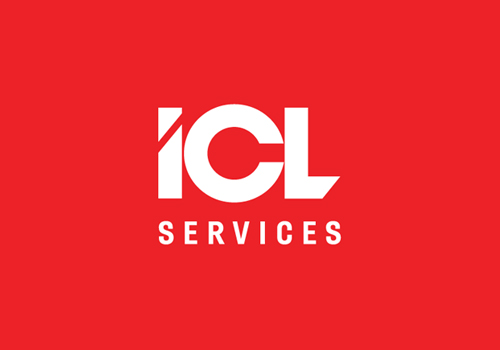Готово!
Скоро материал придет на указанную электронную почту. Также подписывайте на нас в Facebook
Ok
How to outsource IT: evaluation insights and hallmarks of successful implementation
Businesses outsource their IT processes increasingly more often these days as they seek to optimize their operations. Russia's IT outsourcing market totaled RUB 262 billion in 2024, up 22% from 2023, a study has revealed. IT outsourcing services are most sought-after in software development, finance, law, marketing, sales, and business administration.
If you want your outsourcing plans to succeed, first of all you should have a clear idea of the business targets and priorities currently facing your IT team, in order to correctly articulate your inquiry to the service provider.
We asked Svetlana Kareeva, Senior Business Development Manager at ICL Services, to illuminate the tasks to attend to and critical indicators to watch out for when outsourcing the IT function.
Task #1
Cost control: make sure the IT maintenance costs are predictable and budget planning is easier and more efficient.
To that end, you have to figure out the pricing structure of the outsourced service based on your company’s budgeting policy. Let’s take a look at the more widespread pricing models, weighing each one's pros and cons:
Price per unit (Configuration Item, CI):
• Unit examples: network device, end user, virtual server, application, or gigabytes of data storage;
• The price is easy to scale without having to re-sign the contract (pay more for more servers, pay less for fewer);
• Apart from the SLA, the agreement must include a service description: the specific services to be provided;
• Includes service quality management;
• Doesn’t always work so well on small volumes;
• Budget planning should account for variation in the volume of services consumed.
Flat service price:
• Lump-sum contract price or each service priced individually;
• Always has limits on supportable units or number of tickets, price renegotiated in the event of material change;
• In addition to the SLA, a service description is agreed on, same as when a price per unit is set;
• Includes service quality management;
• This model works well for budget planning where the services are static, not changing significantly month to month.
Dedicated employees:
• Those are usually individual employees, the customer gets multiple CVs to choose from, and there is the option to interview the candidates;
• The customer manages the dedicated employees directly, or may request a manager;
• The IT company and the customer share the risks associated with employee management. In the event of an employee becoming unavailable for administrative reasons (sick leave or holiday), a replacement may be provided only by mutual consent, subject to availability. If no replacement is provided, no payment will be made for the unavailable resource;
• Work is limited to the job description, consistent with the employee’s grade;
• The model does not imply an SLA, so this approach is better suited to project work and consulting on an ad hoc or permanent basis.
Task #2
Spend less time maintaining current IT services and more time planning IT strategy for the organization and making critical decisions. Or, conversely, address only a specific problem area.
First, you need an audit of your current IT infrastructure and the workload it generates: how many systems need maintenance, which are more critical, and which require the most work. You can do the audit yourself, for example, by using the contractor's question forms, or you may want to engage an outsourcing expert to take an inventory of everything you have. Next, make up your mind about the support services the contractor will provide.
Support services are typically split between 3 levels:
• 1st line: taking calls, assigning jobs and fixing the easier ones
• 2nd line: routine jobs, most problems solved
• 3rd line: challenging jobs, improvement planning
You can outsource all three levels at once or some of the work. The more detailed and comprehensive your analysis, table of supportable units, and request statistics, the more accurately the support services will be priced.
Task #3
Reduce IT service failures and have guaranteed recovery times enshrined in the Service Level Agreement.
The IT system's availability for business depends on how the system is designed and how quickly and robustly it can recover. To ensure speedy recovery, at the very least, the following provisions should be included in the Service Level Agreement (SLA):
• incident recovery time: how quickly the service is restored;
• incident response time: how soon the contractor’s engineers start working on the problem. This metric is more critical to information security, where response time means how effectively damage can be prevented or mitigated during an attack.
The KPIs must correspond to the system's criticality. Before the KPIs can be determined, you need to understand how long a particular system can remain unavailable before the business starts incurring significant costs. Less critical systems with longer acceptable recovery times may have a lower support cost.
Similar metrics can be applied to service requests (e.g., in relation to grant of access, disk space, and so on).
Far from every company has a formal problem management process, and not all outsourcing contractors analyze trends, incident causes or risks as part of their service. If you expect your partner to focus on reducing the failure rate, be sure to include this requirement in the terms of reference.
Service desk evaluation is yet another important indicator to look at. While the primary job of the service desk is to promptly engage the appropriate resources in incident resolution, the service desk may be required to do more, and should be required to do more if the service desk gets calls from end users and VIP customers. To accelerate problem-solving action on end-user requests, it is common to introduce KPIs for the percentage of calls resolved at 1st line (sometimes at first call).
Another important evaluation metric for the service desk is user satisfaction: whether your customers are fully satisfied with the call processing promptness and quality, and whether their user experience was pleasant and efficient.
Task #4
Strengthen control over support operations, get to know the team's workload better, track the measurable KPIs and their dynamic. Implement effective monitoring and escalation processes, assess service quality regularly, submit comments and receive feedback.
A broader set of metrics is used to improve the quality of incident processing, request fulfillment, and change implementation. Rarely included in the formal SLA, they may appear in the contractor's reports to the customer and may be regularly discussed at meetings.
Here are a few examples of operational metrics:
• how may times the incident is re-opened: is incident resolution verified conscientiously enough?;
• how many times the incident is reassigned: are the escalation processes working as they should? Any instances of “ping-pong” between teams?;
• top 3 incident categories: we seek candidates for raising issues, we try to reduce IT service failures by addressing those issues;
• size of the incident and service request backlog.
Numerous practices are employed to ensure the consistent high quality of support services, such as:
• a management, communication, and escalation model (who to go to, who's responsible for what, and how to get things back on track when something goes wrong)
• transparent service reports
• customer satisfaction management and complaint management
• the contractor's own risk management and service continuity management
All these points should be taken up with your potential outsourcing contractor to assess their maturity in matters of service delivery.
Task #5
Make sure the IT services remain available the entire time during the operating hours of business units.
The standard service support hours are from 9 AM to 6 PM Moscow time. But sometimes these hours are insufficient:
• production often starts very early, e.g. 6 AM;
• subsidiaries across the nation, from Kaliningrad to Vladivostok. Or just one in Yekaterinburg or Krasnoyarsk, where Moscow standard time does not apply;
• pharmacies, some retail stores.
In that case, a more nuanced time coverage must be specified. Any option will do, including 24/7 or on-call support for critical incidents on weekends and nights.
Sometimes extended support hours are needed on an ad hoc basis, such as to fill urgent production orders or during peak sales. You may want to place the support team on an enhanced schedule during periods of high stress.
Task #6
Make informed spending decisions on IT service changes, restrict spending to what is truly indispensable. Find a balance between business risks and investment needs.
Almost all businesses have faced the need to constantly analyze risks in recent years. What happens if I stay with Western vendors? How risky is it to switch to domestic technology? Domestic technology alternatives are available, but businesses have yet to learn to trust them.
In addition to 3rd-line support, outsourcing contractors typically employ IT architects with extensive experience in both service and integration projects. An IT architect may be engaged for the duration of service transformation or from time to time as needed to provide on-call advice or plan IT strategy for your company overall or in relation to specific IT services. If the same outsourcing contractor provides infrastructure support services, the architect will be working closely with the contractor’s team and, unlike a temporary advisor, will gain in-depth knowledge of all the fine points.
Conclusion
Outsourcing IT support is a proposition that requires serious preparations. When you properly articulate your tasks and get your priorities right, you will be able to form a sound judgment of the services you receive and ensure your company’s stable operation.
If you have a sense of the answers to the questions posed in this article, your first step toward outsourcing will be successful: you will be able to clearly define your company’s needs, obtain plain and clear offers, and make the right choice.
If you’re thinking of outsourcing your IT support but are facing some difficulties, you may want to seek advice from experienced integrators. And remember that ICL Services professionals are here to promptly configure the solutions and services tailored to your specifications to ensure the smooth operation of your IT systems and optimize the performance of your business IT processes.
Stay informed
Subscribe to our newsletter and keep up with our latest news

